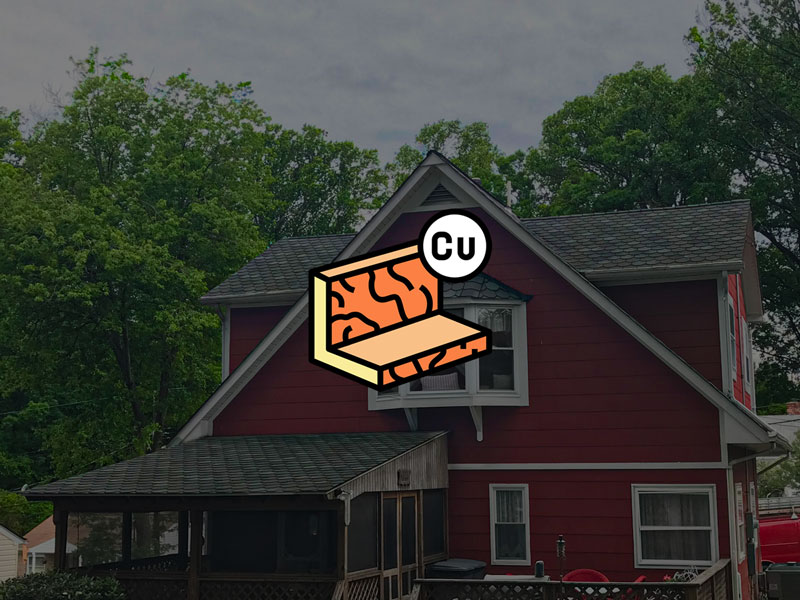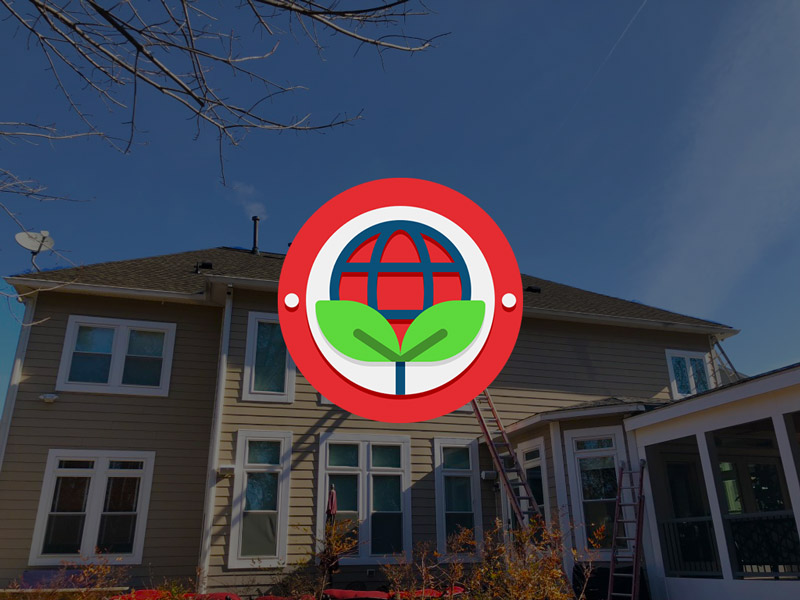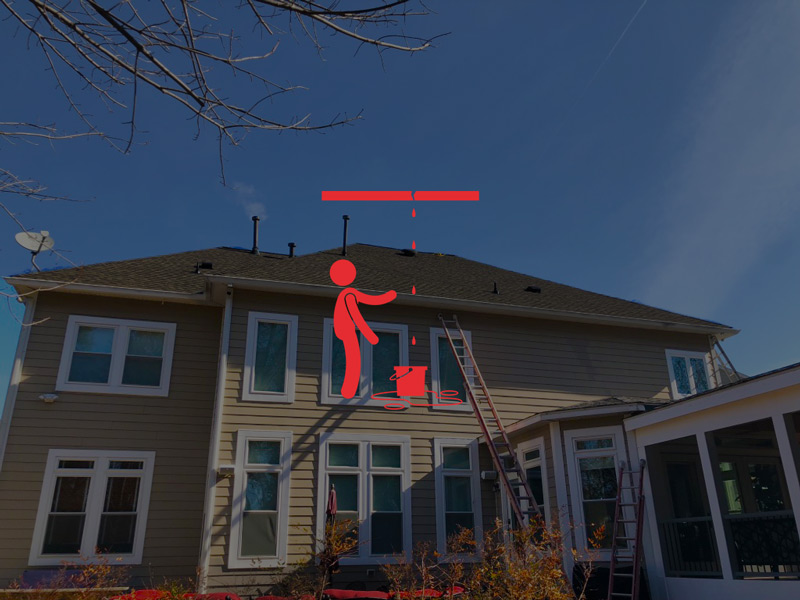Copper Strips for Roof Moss: Preventing / Protecting
Roof moss may appear harmless at first, but if left unchecked, it can cause significant damage to your roof and compromise its integrity. Moss retains moisture, which can seep into the roof’s underlying materials, leading to rot, decay, and even structural issues. Additionally, moss can accelerate the wear and tear of roofing materials, reducing their lifespan and necessitating premature repairs or replacements.

How Copper Strips Work
The Science Behind Copper Strips
Copper strips provide an innovative and natural solution for preventing moss growth on roofs. Understanding the scientific principles behind how copper strips work can help homeowners make informed decisions when it comes to moss prevention.
Mechanism of Moss Prevention
Copper strips work by utilizing the antimicrobial properties of copper to hinder moss growth. When rainwater comes into contact with the copper strips, a process known as electrolysis occurs. This process leads to the release of copper ions into the water.
Inhibition of Moss Development
As rainwater flows over the copper strips, the copper ions are carried down the roof surface. These ions act as a deterrent to moss and other organic growth, disrupting their ability to thrive. Copper ions have the ability to penetrate the cells of moss, interfering with their metabolic processes and ultimately inhibiting their development.
Long-Lasting Effectiveness
One of the key advantages of copper strips is their long-lasting effectiveness in preventing moss regrowth. The continuous release of copper ions ensures a sustained barrier against moss colonization. Unlike chemical treatments that require repeated applications, copper strips provide a more durable solution, reducing the need for frequent maintenance and reapplication.
Benefits of Copper Strips:
Natural moss prevention: Copper strips offer a natural and environmentally friendly way to prevent moss growth without the use of harsh chemicals.
- Minimal maintenance: Once installed, copper strips require little to no maintenance, making them a convenient option for homeowners.
- Cost-effective solution: Considering their long-lasting effectiveness, copper strips provide a cost-effective moss prevention method in the long run.
- Versatile application: Copper strips can be applied to various types of roofs and are compatible with different architectural styles.

Installation and Placement of Copper Strips
Step-by-Step Guide
Preparation: Start by cleaning the roof surface to remove any existing moss, debris, or dirt. Ensure the roof is dry before proceeding with the installation.
- Measure and cut: Measure the length of the roof ridge or the areas prone to moss growth. Use a sturdy pair of tin snips or metal cutters to cut copper strips to the appropriate length.
- Placement: Position the copper strips along the ridge line or other susceptible areas, such as valleys or areas with heavy shade. Ensure a consistent and even placement of the strips across the roof surface.
- Attachment: Secure the copper strips to the roof using roofing nails or screws. Make sure they are firmly fastened to withstand wind and weather conditions.
- Overlap and seal: If required, overlap the copper strips to ensure complete coverage. Use a waterproof sealant or roofing cement to seal the joints and prevent water penetration.
Suitable Roof Types
Copper strips can be installed on various roof types, including asphalt shingles, wood shakes, and metal roofs. They are versatile and compatible with most roofing materials. Consult a professional or refer to manufacturer guidelines to ensure proper installation on specific roof types.
Importance of Proper Placement
Proper placement and positioning of copper strips are crucial for achieving maximum effectiveness in moss prevention. The key considerations include:
- Ridge line placement: Installing copper strips along the roof ridge helps create a barrier that prevents moss growth from spreading to other areas of the roof.
- Vulnerable areas: Identify areas of the roof that are prone to moss growth, such as areas with heavy shade or dampness. Install copper strips in these areas to target moss prevention.
- Coverage and spacing: Ensure the copper strips cover a sufficient area to effectively deter moss growth. Adequate spacing between the strips allows for proper water runoff and copper ion dispersion.

Benefits of Copper Strips
Advantages of Copper Strips
When it comes to moss prevention on roofs, copper strips offer several distinct advantages over other methods. Let’s explore the benefits of using copper strips and why they are a preferred choice for homeowners.
Superior Moss Prevention
Compared to alternative moss prevention methods, such as chemical treatments or regular manual cleaning, copper strips provide superior and long-lasting effectiveness. While chemical treatments may require frequent reapplication, copper strips create a continuous barrier against moss growth. The sustained release of copper ions inhibits moss development, ensuring your roof remains moss-free.
Eco-Friendly Solution
Copper strips are an eco-friendly moss prevention solution, making them a sustainable choice for homeowners. Unlike chemical treatments that introduce potentially harmful substances into the environment, copper is a natural material that does not pose any significant risks to the ecosystem. By opting for copper strips, you can effectively prevent moss growth while minimizing your environmental footprint.
Preservation of Structural Integrity
Moss growth on a roof can lead to serious damage over time, compromising its structural integrity. However, by installing copper strips, you can protect your roof from the detrimental effects of moss. Moss often retains moisture, which can seep into the underlying materials and cause decay, rot, and even structural issues. Copper strips act as a preventive measure, keeping your roof dry and extending its lifespan.
Additional Benefits:
- Cost-effective: Copper strips offer long-term savings by reducing the need for frequent moss cleaning or chemical treatments.
- Low maintenance: Once installed, copper strips require minimal maintenance, providing a hassle-free solution for moss prevention.
- Compatibility: Copper strips can be installed on various roof types, making them versatile and suitable for different architectural styles.

Signs of Roof Leak and Damage
Identifying Roof Leak
Roof leaks can cause significant damage if left undetected and untreated. Homeowners should be aware of the hidden signs of a roof leak to prevent further issues. By promptly identifying these signs, you can take the necessary steps to address the problem before it worsens.
Water Stains and Discoloration
Water stains or discoloration on ceilings or walls are common indicators of a roof leak. These stains typically appear as yellowish-brown patches and may gradually spread over time. Pay attention to any new or growing stains, as they often signal an active leak. Remember to inspect areas near chimneys, skylights, vents, and plumbing penetrations, as these are prone to leaks.
Mold and Mildew Growth
The presence of mold or mildew in your home can indicate a hidden roof leak. Mold thrives in damp environments, making a leaking roof an ideal breeding ground. Look for signs of mold growth on walls, ceilings, or in attic spaces. The appearance of musty odors can also be an indication of mold caused by moisture infiltration from a roof leak.
Peeling or Bubbling Paint
If you notice paint peeling or bubbling on your walls or ceilings, it may be due to water seepage from a roof leak. When water enters through the roof, it can cause the paint to lose adhesion and result in these visible signs. Examine areas where paint is blistering or peeling, as it could be an indication of an underlying leak.
The Importance of Regular Roof Inspections
Regular roof inspections are essential for early detection of leaks and to prevent extensive damage. Schedule professional roof inspections at least once a year, especially before the rainy season or after severe weather events. A qualified roofing contractor can assess the condition of your roof, identify potential issues, and address them promptly. Additionally, homeowners can perform visual inspections themselves, checking for loose or damaged shingles, cracked flashing, or any signs of wear and tear.
View More Articles
Please Share!










